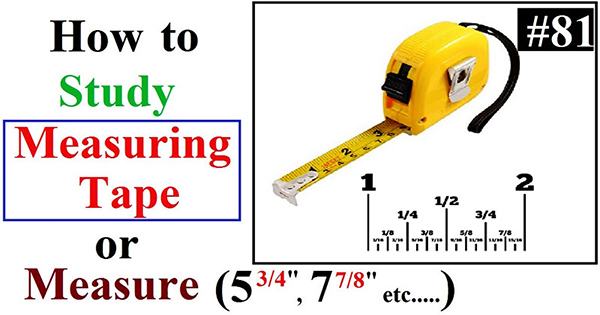How to study decimal value in a measuring tape

In this construction video tutorial, one can learn the detailed process to work out the values in measuring tape in construction site. If there are different dimensions in decimal forms, then it becomes very difficult to make the perfect measurement. By watching the following video, one can easily resolve the issue.
In the top section, the measuring unit exists as feet. Above the feet, the measuring unit appears as inches.
In lower section there will be measuring unit meter and centimeter. In feet section, you can find some figures which appear as 1-2, 1-3, 1-4etc. in red colors. So, 1-2 means 1 feet 2 inches, 1-3 means 1 feet 3 inches etc.
We know, 1 centimeter = 10 mille meter
1 meter = 100 centimeter
The tape is pointed along the tape edge in inches and fractional inches, usually in quarter-, eight-, sixteenth-inch extensions. Some tape measures are pointed in millimeters, centimeters, and meters on one edge.
The mostly recognized common tape measures are 12 feet, 25 feet, or 100 feet in length. A 12-foot tape measure is perfect for consumers. The 25-foot length is known as a builder's tape and is pointed in feet and at 16-inch extensions to work out the standard distance among wall studs smoothly. The 100-foot tape, normally made of reinforced cloth, is ideal for finding out property boundaries and other external measurements.
Most tape measures contain a clip that is affixed to a fixed object to calculate distances exactly. There are various steel blade tapes which contain tension-control brakes to lock the blade in place for measuring distances. Longer tapes contain a crank on the side of the case to pull back the cloth tape.
To get more information on measuring tape, watch the following video tutorial.
Video Courtesy : F&U-FORYOU

